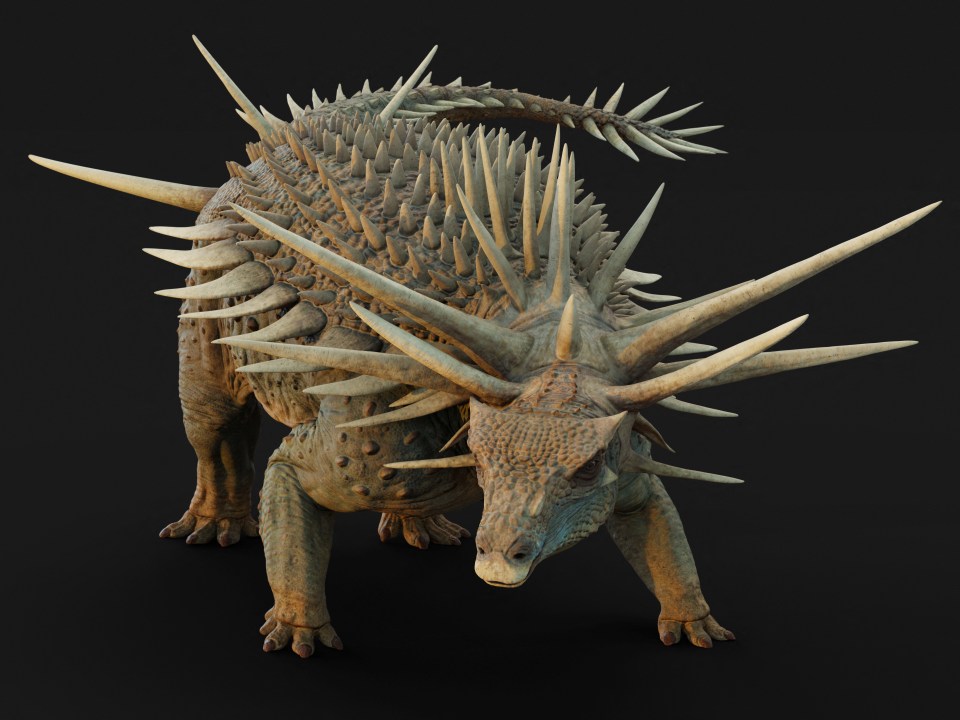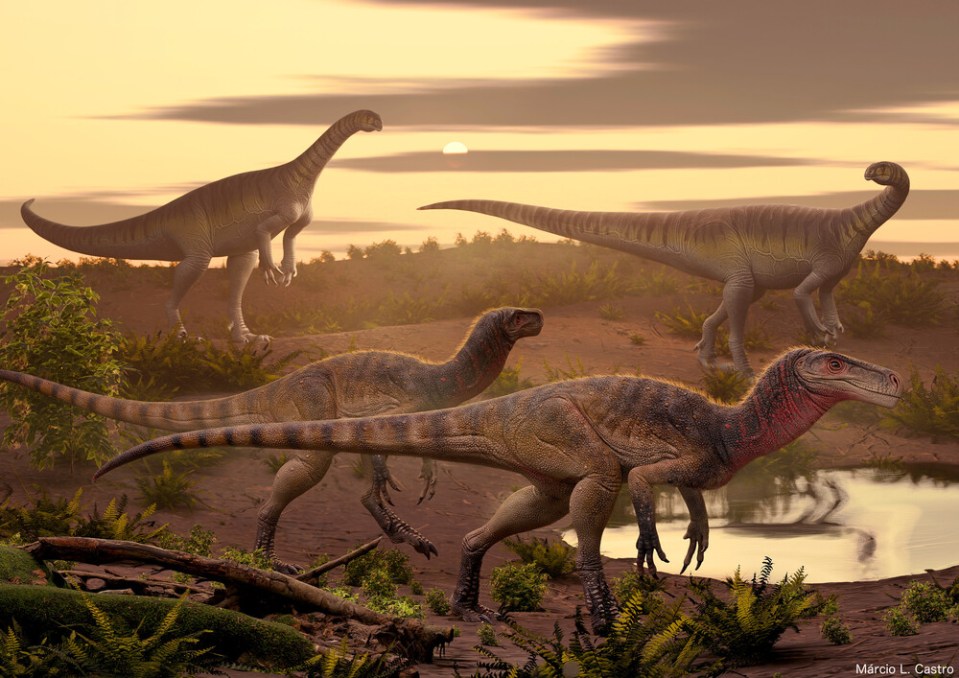Dinosaurs, unicorns and ‘raging grannies’ — but no kings — in Sacramento
SACRAMENTO — Thousands of rebels gathered outside the state Capitol on Saturday, mindlessly trampling the lawn in their Hokas, even as the autumnal sun in Sacramento forced them to strip off their protective puffer vests.
With chants of “No Kings,” many of these chaotic protesters spilled off sidewalks into the street, as if curbs held no power of containment, no meaning in their anarchist hearts.
Clearly, the social order has broken. Where would it end, this reporter wondered. Would they next be demanding passersby honk? Could they dare offer fiery speeches?
The answer came all too soon, when within minutes, I spotted clear evidence of the organized anti-fascist underground that U.S. Atty. Gen. Pam Bondi has been warning us about.
The “Raging Grannies of Sacramento” had set up a stage, and were testing microphones in advance of bombarding the crowd with song. These women wore coordinating aprons! They had printed signs — signs with QR codes. If grandmothers who know how to use a QR code aren’t dangerous, I don’t know who it is.
Ellen Schwartz, 82, told me this Canadian-founded group operates without recognized leaders — an “international free-form group of gaggles of grannies,” is how she put it, and I wrote it all down for Kash Patel.
Within moments, they had robbed Dick Van Dyke and Julie Andrews of their most famous duet: “Supercalifragilisticexpialidocious,” mutilating it into “super callous fragile racist narcissistic POTUS.”
Ellen Schwartz, 82, is a member of the “Raging Grannies,” a group that protested at the “No Kings” rally in Sacramento on Saturday.
(Anita Chabria / Los Angeles Times)
Not to be outdone by the Silent Generation, 2-year-old Rhea also showed up, first clinging to her mom, then toddling around on her own as if she owned the place. This is a kid to keep an eye on.
Since Rhea cannot yet speak about her political beliefs, her parents gave me some insight into why she was there.
“I’m not sure if we’ll still have a civilization that allows protest very long, so I want her to at least have a memory of it,” said her dad, Neonn, who asked that their last names not be used. Like many Americans, he’s a bit hesitant to draw the eye of authority.
Kara, Rhea’s mom, had a more hopeful outlook.
“America is the people, so for me I want to keep bringing her here so that she knows she is part of something bigger: peace and justice,” she said, before walking off to see the dinosaurs.
Kara holds her 2-year-old daughter, Rhea, at the rally in Sacramento.
(Anita Chabria / Los Angeles Times)
Dinosaurs, that’s right. And tigers. And roosters. And unicorns. Even a cow hugging a chipmunk, which I believe is now illegal in most of the South.
Yes, folks, the Portland frog has started something. The place was full of un-human participants acting like animals — dancing with abandon, stomping around, saying really mean things about President Trump.
Meanwhile, the smell of roasting meat was undeniable. People, they were eating the hot dogs! They were eating the grilled onions! There were immigrants everywhere selling the stuff (and it was delicious).
I spoke to a Tyrannosaurus Rex and asked him why he went Late Cretaceous.
“If you don’t do something soon, you will have democracy be extinct,” Jim Short told me from inside the suit.
Jim Short, left, and his wife, Patty Short, donned dinosaur costumes at the “No Kings” rally in Sacramento.
(Anita Chabria / Los Angeles Times)
His wife, Patty, was ensconced in a coordinating suit, hers brown, his green. Didn’t they worry about being labeled anti-American for being here, as House Speaker Mike Johnson and others have claimed?
“I’m not afraid,” Patty said. “I’m antifa or a hardened criminal or what’s the other one?”
“Hamas?” Jim queried. “Or an illegal immigrant?”
“I think people need more history,” Patty said.
I agree.
And the day millions of very average Americans turned out to peacefully protect democracy — again — may be part of it.







